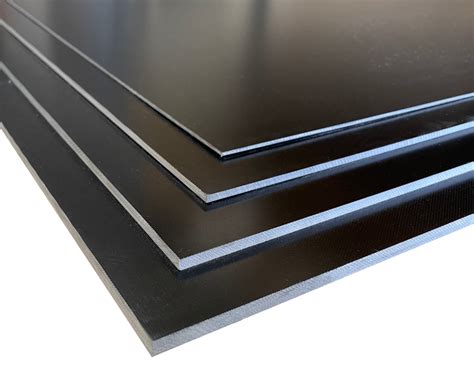What is G10?
G10 is a versatile, high-pressure fiberglass laminate material that offers excellent mechanical, thermal, and electrical properties. It is composed of continuous filament glass cloth impregnated with an epoxy resin binder under high pressure and temperature. The resulting material is strong, rigid, and resistant to moisture, chemicals, and heat.
Properties of G10
- High mechanical strength and dimensional stability
- Excellent electrical insulation properties
- Good thermal resistance
- Moisture and chemical resistance
- Low water absorption
- Lightweight and easy to machine
Applications of G10
G10 finds applications in various industries, including:
- Electrical and electronics: Insulating parts, terminal boards, and printed circuit boards (PCBs)
- Aerospace: Structural components, insulating washers, and spacers
- Medical: Surgical instruments, orthotics, and prosthetics
- Industrial: Jigs, fixtures, and machine parts
- Transportation: Busbar supports, switchgear components, and insulating washers
What is G10 FR4?
G10 FR4 is a flame-retardant version of G10 laminate material. It is composed of a flame-retardant epoxy resin combined with glass fabric reinforcement. The addition of flame retardants enhances the material’s ability to resist ignition and the spread of flames, making it suitable for applications where fire safety is a critical concern.
Properties of G10 FR4
- Flame retardant: Meets UL94 V-0 flammability rating
- High mechanical strength and dimensional stability
- Excellent electrical insulation properties
- Good thermal resistance
- Moisture and chemical resistance
- Low water absorption
- Lightweight and easy to machine
Applications of G10 FR4
G10 FR4 is widely used in applications that require flame retardancy, such as:
- Electrical and electronics: Printed circuit boards (PCBs), switchgear components, and insulating parts
- Aerospace: Structural components, insulating washers, and spacers in fire-prone areas
- Transportation: Rail and automotive applications where fire safety is crucial
- Industrial: Jigs, fixtures, and machine parts in hazardous environments
- Building and construction: Insulating panels and fire-resistant components
Key Differences Between G10 and G10 FR4
While G10 and G10 FR4 share many properties, the primary difference lies in their flame retardancy. The table below highlights the main distinctions between these two materials:
| Property | G10 | G10 FR4 |
|---|---|---|
| Flame Retardancy | Not flame retardant | Flame retardant (UL94 V-0) |
| Composition | Epoxy resin + glass fabric | Flame-retardant epoxy resin + glass fabric |
| Applications | General-purpose industrial applications | Applications requiring flame retardancy |
| Cost | Lower cost compared to G10 FR4 | Higher cost due to flame-retardant additives |

Factors to Consider When Choosing Between G10 and G10 FR4
When deciding between G10 and G10 FR4 for your application, consider the following factors:
-
Flame Retardancy Requirements: If your application demands flame retardancy, G10 FR4 is the clear choice. However, if fire safety is not a primary concern, G10 may suffice.
-
Cost: G10 FR4 is generally more expensive than G10 due to the addition of flame-retardant additives. Evaluate your budget and the cost-benefit ratio when making your decision.
-
Mechanical and Thermal Properties: Both G10 and G10 FR4 offer excellent mechanical strength and thermal resistance. Review the specific property requirements of your application to ensure the chosen material meets your needs.
-
Environmental Factors: Consider the operating environment of your application. If it involves exposure to moisture, chemicals, or extreme temperatures, both G10 and G10 FR4 can provide adequate resistance.
-
Machinability: G10 and G10 FR4 are both relatively easy to machine. However, the presence of flame retardants in G10 FR4 may slightly impact its machinability compared to G10.
FAQ
-
Q: Can G10 be used as a substitute for G10 FR4 in applications requiring flame retardancy?
A: No, G10 does not have flame-retardant properties. For applications that require flame retardancy, G10 FR4 should be used instead. -
Q: Is G10 FR4 as strong as G10?
A: Yes, G10 FR4 offers similar mechanical strength and dimensional stability to G10. The addition of flame retardants does not significantly impact its mechanical properties. -
Q: Can G10 FR4 be used in outdoor applications?
A: Yes, G10 FR4 exhibits good moisture and chemical resistance, making it suitable for outdoor applications. However, it is essential to consider the specific environmental factors and consult with the manufacturer for recommendations. -
Q: Is G10 FR4 more difficult to machine than G10?
A: G10 FR4 may be slightly more challenging to machine compared to G10 due to the presence of flame retardants. However, both materials are relatively easy to machine using standard tools and techniques. -
Q: Can G10 and G10 FR4 be bonded together?
A: Yes, G10 and G10 FR4 can be bonded together using suitable adhesives, such as epoxy or polyurethane. Proper surface preparation and adhesive selection are crucial for achieving a strong bond.
Conclusion
Understanding the differences between G10 and G10 FR4 is crucial when selecting materials for your applications. While both materials offer excellent mechanical, thermal, and electrical properties, G10 FR4 stands out for its flame-retardant characteristics. By considering factors such as flame retardancy requirements, cost, environmental conditions, and machinability, you can make an informed decision and choose the material that best suits your needs.
When in doubt, consult with material experts or manufacturers to obtain specific guidance and recommendations for your application. By leveraging the unique properties of G10 and G10 FR4, you can create high-performance, reliable, and safe components for a wide range of industries and applications.

No responses yet